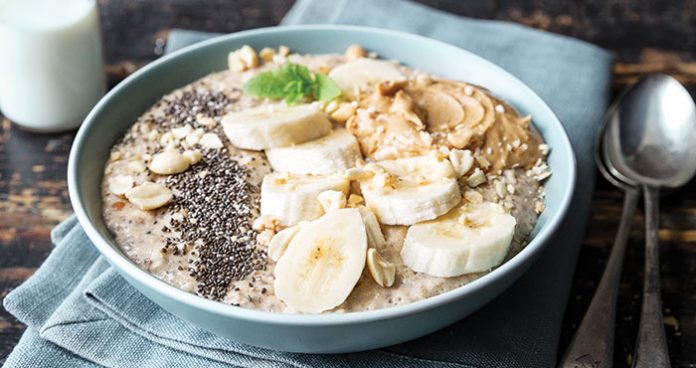We know as well as anyone how hard it can be to get your kids to eat a balanced, healthy diet, but did you know that research conducted by the World Obesity Federation predicts that 241,000 schoolchildren in Ireland will be overweight or obese by as early as 2025?
To tackle this issue head on, it’s important to take a family-centred approach. This means focusing on developing healthy habits that the entire family can adopt, rather than focusing solely on weight. Michelle Loughlin, dietitian for Spectrum Health, has offered the following tips for worried parents, to help ease the burden of getting it right when it comes to school lunches and mealtimes during the school week.
1. There is no such thing as a perfect diet
Try not to put too much pressure on yourself to feed your child “perfectly,” as this can create an issue in itself. We need to eat for the rest of our lives, so it’s important to enjoy food, making choices that nourish the body – but also include treats which you and your children enjoy. Try not to label foods as good or bad, as restriction of perceived “bad foods” can make them more desirable. Allowing all foods in the diet in a balanced way will help to develop much healthier relationships with food. Use the 80:20 rule: 80% what nourishes the body and 20% foods you and your children enjoy.
An example of balance could be a ham and cheese sandwich with a piece of fruit and a small sweet treat, like our better for you brownies.
2. Make sustainable changes together
Children will be much more eager to eat healthily if the whole family does it together. And, the key word here is “together.” Try and have breakfast together as a family, even if it means getting up that little bit earlier. This may not be possible every day and might be something that you do at the weekends. In the beginning, aim for even just 1 day a week. Similarly, it is a good idea to sit down as a family for dinner in the evening.
3. Avoid quick-fix breakfasts and eating on-the-go
It can be very easy to just pour a large bowl of cereal, but most are very high in sugar and offer very little nutrition. What this means is that it may not fill you or your child up for long and may leave them looking for a snack. Instead, try and ensure your child has a high-fibre breakfast which is low in sugar, e.g. porridge with yogurt and berries or Weetabix with milk and banana, or try our peanut butter and banana oats recipe.
4. Salads are not a great option for growing children
Children have high energy requirements, and although salads are perceived as “healthy” foods, they may not fill your child up or provide them with enough energy to keep them going throughout the day. They can end up craving sugary snacks for an energy boost. The key to lunchtime is to combine different food groups as each group will do a different job in the body. Try to use this pattern to guide you:
- Choose a carbohydrate: bread, wrap, pitta bread or pasta/rice (choose brown at least 50% of the time)
- Choose a protein: ham, chicken, eggs, fish, turkey, beans or chickpeas
- Add dairy: yoghurt, cheese, milk
- Add fruit and/or veg: salad in sandwich, such as cucumber or tomato, carrot sticks with a dip, an apple, 2 mandarins, etc.
e.g. Wholemeal turkey and veggie wrap with yoghurt and kiwis, or lemony pea and ham pasta with tomatoes and cheese, egg salad sandwich with carrot sticks and a glass of milk.
5. Keep treats to treats
A key issue at present for children is overconsumption of high fat and high sugar foods. In some cases, main meals are being replaced with junk food. This can affect a child’s growth long-term and can lead to weight gain. Again, try to use the 80/20 rule – 80% foods that nourish the body and 20% of the time a few treats. Safefood recommends limiting treats to mini or snack size treats every 2nd day or less. The odd treat really is ok but try not to make it a daily occurrence, e.g. on a Friday, and it’s all about portion control. You can agree this ahead of time with your child.
Some healthier, home-made treat ideas include our chocolate raspberry brownies or these almond butter banana cookies.

6. Lead by example
This one is fairly self-explanatory, but by eating healthily as a parent in front of your child, they are likely to mimic your eating habits. Children do as they see, not what they are told.
7. A little bit of praise goes a long way
We’re not talking about praise for weight loss as we want to take the focus off the scales. We’re talking about praising children for when they complete an activity or join a sports team at school, as well as when they make healthy food choices. It is really important to praise children for positive behaviour and use non-food-based rewards, such as a trip to the cinema or a sleep over at a friend’s house to reinforce good behaviour.
8. Involve your kids in cooking and food shopping
Children tend to flex their independence muscles so being regularly told what to eat can become a real issue. Children love to be involved, so use this in a positive way and it is a great way to make your children interested in what they’re eating. By involving them in the shop for fresh ingredients, choosing new fruit or veg to try, as well as the cooking process, they’re much more likely to readily eat the resulting healthy meal.
9. Good presentation works wonders
Especially for younger kids, fun presentation can turn a healthy plate into something visually appealing. Just think of all the fun creations you can make using different textures, colours and shapes. And it will make them smile when they open their lunch box. This doesn’t even have to be anything too fancy as, let’s face it, life is busy. Simple things such as cutting sandwiches into triangles or peeling fruit can make children more likely to eat them. Ask your child how they like their food to get you started.
Looking for inspiration? Why not try our sandwich bouquets?
10 Make sure your child is getting enough sleep and is staying hydrated
Something many people forget, is that getting adequate sleep is crucial to a healthy lifestyle, and this is true for children also. If your kids are eating the right foods and getting regular exercise, they are more likely to sleep better too. And concentration levels in school will be at their best. Equally important is the need for your child to stay hydrated so always keep an eye on them to make sure they’re drinking enough water.
11. Turn the TV off and ban the phones…
…during mealtimes anyway. Try and switch off these distractions and talk to your children. When you show interest in their day and activities it works wonders to creating a happier, healthier lifestyle for all involved. By taking your time at mealtimes and enjoying the time together, you’re slowing down your eating and will find everyone eats less as they feel full faster.
In need of some new lunchbox ideas? Why not check out the rest of our tasty lunchbox recipes!








You have to be signed in to comment this post.